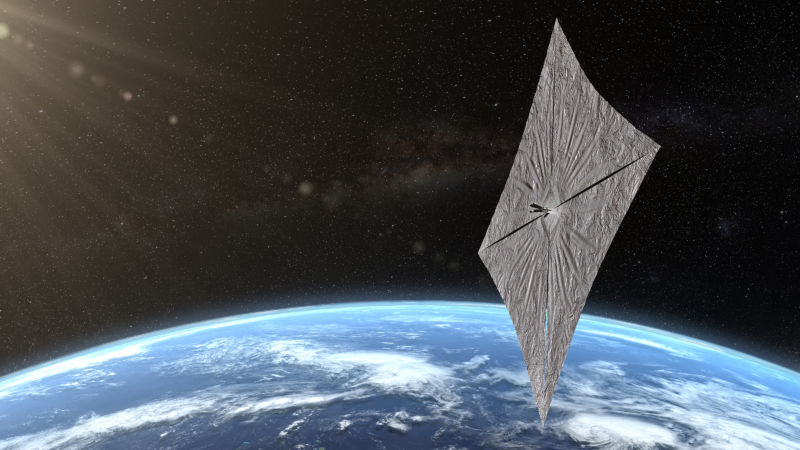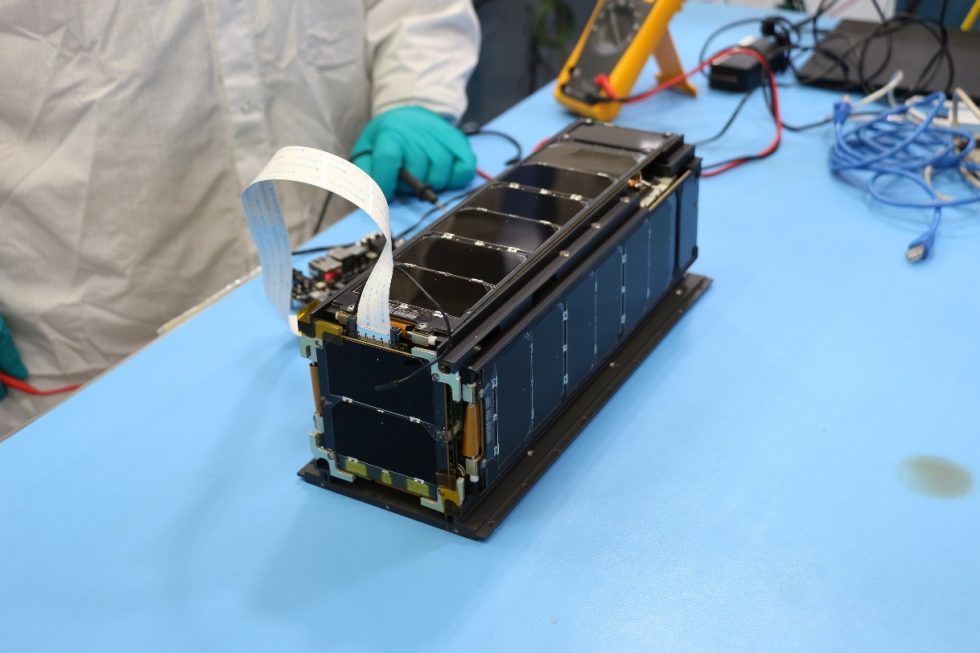https://arstechnica.com/?p=1524643

Josh Spradling / The Planetary Society
As early as next Monday night, a SpaceX Falcon Heavy rocket will launch a cluster of 24 satellites for the US Air Force. Known as the Space Test Program-2 mission, the rocket will deposit its payloads into three different orbits. Perhaps the most intriguing satellite will be dropped off at the second stop—a circular orbit 720km above the Earth’s surface. This is the Planetary Society’s LightSail 2 spacecraft.
After a week in space, allowing the satellites deposited in this orbit to drift apart, LightSail 2 will eject from its carrying case into open space. About the size of a loaf of bread, the 5-kg satellite will eventually unfurl into a solar sail 4 meters long by 5.6 meters tall. The Mylar material composing the sail is just 4.5 microns thick, or about 10 times as thick as a human hair.
This experiment, which will attempt to harness the momentum of photons and “sail” through space, is the culmination of decades of work by The Planetary Society. “This goes back to the very beginning, to Carl Sagan, Bruce Murray and Lou Friedman,” the organization’s chief executive, Bill Nye, told Ars in an interview. “We are carrying on a legacy that has been with us since the founders. It’s just an intriguing technology because it lowers the cost of going all over the place in the Solar System.”
Starts with Sagan
As he popularized space and science in the 1970s on television talk shows and in books, Sagan sometimes espoused the virtues of solar sailing. Theoretically, the continual acceleration of photons, although much more gradual than chemical propulsion, could push spacecraft to other stars because this acceleration is continual. Originally, he’d hoped to launch a solar sail to catch up to Halley’s Comet in 1986, but that never happened.
After Sagan co-founded The Planetary Society in 1980 to advocate for government support for space exploration, he and others continued to push the technology. But because the US government was focused on more traditional modes of exploration—the space shuttle program and chemical-powered probes to the outer Solar System—the Planetary Society eventually took up the cause on its own.

LightSail 2 undergoing health checks following vibration testing at the Air Force Research Laboratory.
AFRL
In the late 1990s, the society began work on the Cosmos 1 project to demonstrate a solar sail. This was an ambitious project that involved eight “blades” of a solar sail that covered 600 square meters, and, from an initial altitude of 800km, was intended to raise its orbit by 50km or 100 km over a month in space.
Unfortunately, Cosmos 1 never reached space. It lifted off in 2005 aboard a Volna rocket, which was launched from a Russian submarine in the Barents Sea. The rocket’s first stage failed, and the payload was lost. Undeterred, the Planetary Society built a demonstrator named LightSail 1 that launched in 2015 aboard an Atlas V rocket. This version experienced several technical problems, however, which led to improvements for Light Sail 2. This latest project has cost about $7 million, paid for by the society’s members.
LightSail 2
This version of a solar sail will have a total area of 32 square meters, and mission planners will deploy the sail about two weeks after launch if all goes well. (More details about what will happen can be found here). Using a momentum wheel to adjust the orientation of its sail, the spacecraft will essentially attempt to demonstrate that it can “tack” into the stream of photons emanating from the Sun. Success will come as the spacecraft manages to raise its orbit over the course of a month.
And then what? Japan’s space agency, JAXA, flew a solar sail demonstration mission in 2010 named IKAROS, and NASA flew a very tiny demonstrator named NanoSail-D in 2010 as well. But since then governments have largely ignored the sci-fi-like technology that could provide a much cheaper means of propulsion around the Solar System and beyond. Too much fiction, apparently, and too little science.
Nye hopes the Planetary Society’s solar sail mission will put a little more science behind the technology, leading to additional technical developments by NASA or other international space agency because of its potential to democratize space travel. “It’s the most romantic of space technologies,” he said. “Really, we’re sailing among the stars. It’s fantastic.”
via Ars Technica https://arstechnica.com
June 20, 2019 at 08:44AM
